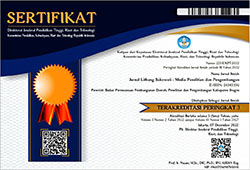THE WORKER CHARACTERISTIC: THE DECISION TO COMMUTE OR NOT
DOI:
https://doi.org/10.32630/sukowati.v3i2.133Keywords:
commuter, worker, election, jabodetabek, binary logisticAbstract
Indonesia has entered a third trend of three mega-demographics trends, namely the transition of migration to mobility. Most of the population do mobility due to work factors. Commuting is a type of non-permanent mobility where a person works in a different place from his residence. They leave the residence in the morning and returns in the afternoon or evening every day or back to residence no longer than 24 hours. Many problems will arise when the rate of mobility is high. Jabodetabek certainly have a special pattern in the mobility of its workers or maybe the year change can also change the mobility patterns in Jabodetabek. Therefore, this study will try to analyze and estimate the influence of the social and demographic characteristics of workers in the Jakarta metropolitan area on their decision to commute or not. If more commuter workers are less educated and do not have training certificates, this will have an impact on the burden of the Jabodetabek Metropolitan area. This study uses Sakernas 2018 data, using the Binary Logistic Regression model. The results of this study are the choose of mobility depend on individual characteristics such as education, sex, age, marital status, income, and training/courses.
Downloads
Published
How to Cite
Issue
Section
License
Copyright (c) 2020 I Gusti Agung Ayu Karishma Maharani Raijaya, Chotib Chotib

This work is licensed under a Creative Commons Attribution 4.0 International License.


















